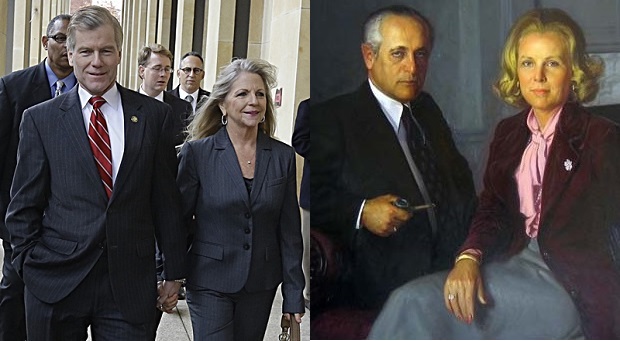In mid-July 2021, I was settling in for the evening after just putting my then three-year-old daughter down for the night. After only a few minutes, I heard her on the stairs. I asked her what she was doing out of bed. She told me that she heard loud noises “like booms” from outside. Exasperated—I thought we were past her being afraid of fireworks—I escorted her back to her room, tucked her in, and told her there was nothing to be afraid of. I was wrong.
Within minutes, a friend who was just at the Tara Thai restaurant in Hyattsville rang my doorbell to tell me about the shooting at Busboys and Poets across the street from where she was dining. Those “booms” my daughter heard were gunshots. This past weekend, nearly six months after that shooting, my daughters, now four and almost two-years-old, were a block away on Queensbury Road when gunmen shot an armored truck driver, attempting to rob the Wells Fargo ATM on Baltimore Avenue in Riverdale.
In 2021, there were over 130 homicides in Prince George’s County—a number that the county has not seen in 15 years. In addition to the murders, last year saw a record rise in car jackings. Of the 152 people arrested in those incidents, 86 were juveniles.
Since the start of the pandemic, Prince George’s County lost nearly 2,000 residents to COVID-19, with over 10,000 hospitalizations. According to state data, the county’s unemployment rate soared from a pre-pandemic low of 3.7% to 8.2% in 2020, one of the highest in Maryland. This is not a coincidence. The pandemic exacerbated poverty, mental illness, and, as a result, criminal activity.
Residents are scared
Residents are scared. Not only are the county’s children often the perpetrators of these acts, but the crimes themselves are senseless. Incidents of road rage and arguments over French fries led to shootings and deaths. Last year, we witnessed a 14-year-old stabbing a cab driver to death; a 12-year-old murdering their 13-year-old classmate outside of Dave and Busters, and 11-year-olds and 12-year-olds committing car jackings.
We now find ourselves at a crossroads. Do we do what has often been done when crime goes up– sound the alarm and demand a police crackdown? Or do we take a breath, and hold on to what the last few decades of harsh and often racist policing tactics have taught us? I’m hoping it’s the latter.
The connection between poverty and crime is clearer now more than ever, and the best way to combat poverty is to invest in families.
While county government, nonprofits, churches, and other groups were instrumental in staving off hunger through meal and supply distribution efforts, we must now work to provide long-term sustenance through free continuing education, affordable housing, and job training programs. Affordable and environmentally sustainable housing will provide families with the much-needed security that was lost in the past two years. Additionally, we should explore ways to offer free access to family therapy and other mental health support services to aid families struggling with the mental and emotional strain with which we’ve been dealing during these unprecedented times.
We must also tackle food insecurity. Too many of our families live in neighborhoods classified as food deserts. The lack of grocery stores and access to affordable fruits and vegetables means that 35% of our children are overweight or obese. A study from Clemson demonstrated that a 1% increase in food insecurity correlates to a 12% increase in violent crime. If we can bring food prosperity and security to our neighborhoods, we should see a massive decrease in criminal activity.
Invest in young people’s social live
Importantly, our young people need to see that we are invested in their social lives. Our county needs to expand our recreational centers; start and support new sports leagues and expand our summer youth employment program.
I have witnessed firsthand the power of these programs, participating in New York City’s summer youth employment program as a teen, which kickstarted my interest in law and business. But we cannot afford to stop there. The goals I’ve outlined above are long-term fixes for deep community wounds.
In the short-term community policing is the only stopgap measure to save lives now. Many of the residents with whom I’ve spoken while canvassing throughout District 3 have asked for more frequent police patrols through their neighborhoods. We must make investments into our police department in humane ways that build community trust and lower crime.
Police Chief Malik Aziz, a reformer and advocate of community policing, seems to be a positive change in PGPD leadership. However, he is understaffed due to increased police retirement during the pandemic. Giving him the resources that he needs to enact the recommendations of the Prince George’s County Police Reform Work Group, including the training of new recruits in community policing techniques, will be a crucial step forward.
I grew up in South Jamaica, Queens—a community where regular gun violence was not outside of the norm. I had hoped for better for my children, and I’m disappointed that I haven’t entirely given it to them. But there is room for hope.
If we dare to bravely walk down the right path with open eyes and giving hearts, we can give our children and families a community where they feel safe, secure, and supported.








Delusional. As long as Democrats continue to coddle criminals and demonize the police, things will get even worse.
Hold criminals accountable!
This is truly the written work of an egalitarian! We know the problem and the problem will not get better by coddling the perpetrators! We might not like racist police but i would rather deal with racist cops than out of control black kids/children…